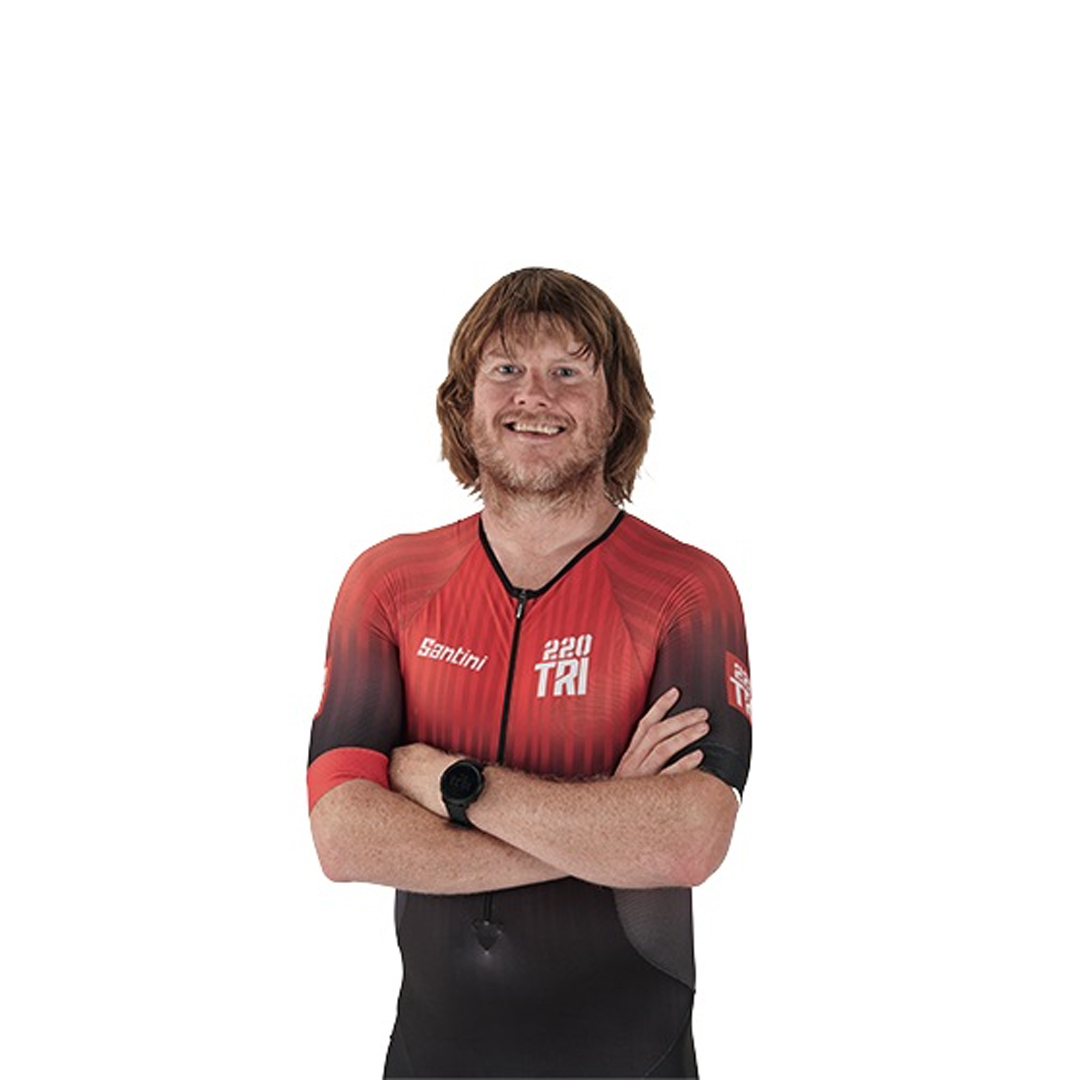We asked Olympic champ Gwen Jorgensen's coach Jamie Turner to talk us through the elements of her run form that make her the fastest runner in Olympic-distance triathlon…
Head
“Gwen is a racer – she responds to all of the demands of racing and punishes herself in races," says Jamie. "She has this within. We also use a variety of skills from a number of sports and athletes – such as Hamish Carter and Emma Snowsill – to empower and develop mental acumen.”
Upper body
“We work to allow the right elbow/shoulder to move forward, which then allows the left elbow to open up, which in turn helps the shoulders stay more relaxed. This also helps reduce too much overall vertical up-and-down movement and effectively lengthens the stride.”
Hips & shoulders
“Gwen has regular soft tissue therapy and physiotherapy, typically every other day. Her physiotherapist (Alex Price) works consistently around her hips and shoulders to make sure she maintains the range of motion required to move efficiently, quickly and without restriction.”
Strength / musculoskeletal health
“Over the past two years we’ve worked hard on Gwen’s recruitment of sport-specific muscles, along with her overall strength in order for her to apply force and hold form under large amounts of fatigue, both in training and racing. This has been done by two means:
1. Consistent activation exercises done on a daily basis to make sure that she’s recruiting the right areas at the right time for all three sports.
2. A comprehensive functional strength programme that Gwen completes 3–4 times per week.”
Legs
“Gwen has quite long limbs, which you wouldn’t think were ideal for triathlon. But her stride length and her ability to run a range of paces are outstanding. Her slow running is good and controlled, and her turn of pace is quite exceptional. We also look at the greats of our sport like Snowsill’s form of 2008 and other women who have been within 3mins of the leading men’s times… and then we aim higher.”
Feet
“Gwen runs very straight and square, with great foot placement and stride. She gets great return on her investment from distance/stamina runs and also quality sessions, so her overall run load is likely to be less than many of her competitors.”
Elite training adaptations
Discover Gwen’s favourite run sessions and, with the help of coach Joe Beer, how you can incorporate them into your training:
1. Long run
Session: 90mins or done as a double 60mins/30mins, variable terrain and surfaces at 5–5:20mins/km pace.
Benefit: This is a good old-fashioned, miles-in-the-bank session at a steady Zone 1 cruise. Splitting it into two is a great way to stimulate muscles in two different parts of the day, which can lead to additional adaptations and really make you feel like a runner!
Adaptation: Do 60–70min run or 2 x 35min runs (if changing time is efficient and your calendar allows). Below 80% of max HR is enough for many sprint and Olympic-distance triathletes. The key point here is to keep to a mixture of surfaces and make sure you’re doing no more than 70mins max. 90mins is not necessary for non-elites.
2. Intervals
Session: 4–6 x 1km repeats with 3mins recovery at 5km pace.
Benefit: Working at 5km pace puts the athlete into the lactate build-up zone, which is hard but tolerable at elite level for 14–17mins. This challenges the athlete to keep good form, work hard and yet deliver an effort which is top quality by using a long, relaxed recovery (3 full mins).
Adaptation: Aim to complete quality efforts that accumulate between 15 and 25mins of running above lactate-threshold pace. Do 5 x 4mins or 6 x 3mins. These must be faster than 5km tri pace, ideally at a recent 5km stand-alone road race best effort. Keep the recovery at 3mins, walking and jogging.
3. Hill repeats
Session: 4 x 4min climbs (on hilly trail) done as 40secs at 3km pace effort, 20secs relaxed. 8mins recovery between sets.
Benefit: Repeated four times this helps maintain good form at high power, but provides enough recovery to make the session mentally sustainable. The relaxed recovery adds to aerobic run time, increasing the need to hold good form (i.e. the last set happens after no less than 45mins of running).
Adaptation: Reducing the repeats per set and the total number of sets keeps it realistic for most age-groupers trying to hold good form running uphill. Do 3 x 3mins on the climb (40sec effort; 20sec relaxed), with a 5min jog recovery on a flatter loop back down.
Top image credit: Delly Carr
